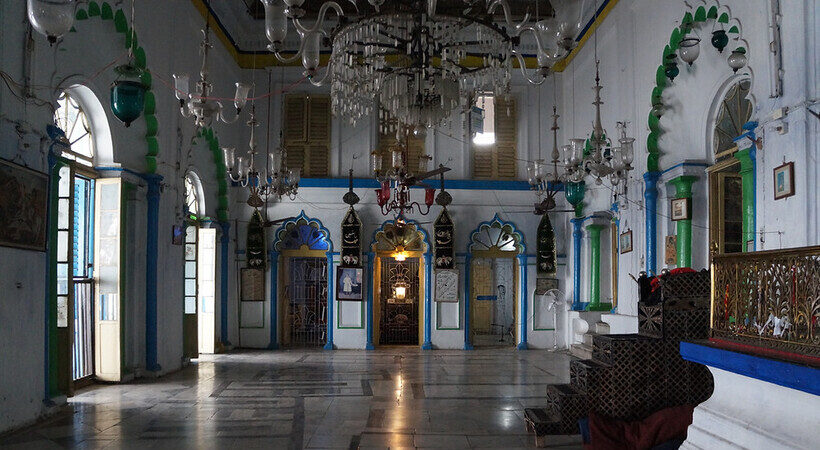Since the rise of the East India Company in the 18th century, the city of Kolkata saw spectacular growth in Gothic and Victorian architecture. However, the lesser-known locality- Metiabruz in Kolkata- is a rich trove of the Indo-Islamic architecture of Lucknow. Metiabruz, meaning the mud tower, has a rich history. Bichali Ghat, in its near vicinity, was where Nawab Wajid Ali Shah had arrived with his men to meet Queen Victoria and to get justice.
Nawab Wajid Ali Shah was a great patron of art, architecture and music and was himself a talented poet and composer. His reign in Awadh had been cut short by the imperial ambitions of Lord Dalhousie, Governor-General of British India, who had deposed him under the pretext of misgovernance. He had refused to sign the Lord Dalhousie’s Treaty and hence when he landed in Kolkata, he was arrested in Fort William and later put up in BNR House, where he continued to live in exile.
It was during this exile period the Nawab, who was missing Lucknow, used his annual allowance of one lakh per month to recreate Lucknow within Kolkata. According to the author and poet Abdul Halim Sharar from Metiabruz, “the King had received only Sultan Khana, Asad Manzil and Murassa Manzil from the British Government of India, but in a very short time, he built several more houses which were surrounded by beautiful gardens and pleasing lawns.
For about a mile along the municipal high road, there were some fine shops. Near the gate to Sultan Khana, there was a very imposing guard-house in which drums were beaten and the hours of the day and night were announced by gongs, as per the old tradition. With 6,000 people following the popular king from Lucknow to Kolkata, Metiabruz and Garden Reach effectively formed a mini Lucknow. The shopkeepers, tailors, moneylenders and “paan wallas” were all from Lucknow.
The Nawab continued to construct a number of structures similar to his beloved Lucknow. Along with the buildings like Murasa Manzil, Adalat Manzil, Noor Manzil and Qasrul Baiza, Imambaras and mosques were also constructed. The Nawab also introduced an open-air zoo in Kolkata that comprised of many species, including leopards, tigers, reptiles, birds and many exotic and rare endangered species.
In his exile in Metiabruz, the Nawab tried to keep the sweet memories of his Lucknow era alive by recreating the musical environments of his Kaisarbagh Baradari. Through his intense love for music, art forms such as Thumri and Kathak were first introduced and popularized in Kolkata. However, the most celebrated import of the King was the delicate meat and rice dish Biriyani. Originally made with mutton, the royal cooks of the Nawab had to improvise in the new environment. Due low availability of mutton, the cooks added chicken and potatoes in the Biriyani, and that is how the famous Kolkata biriyani was born.
After the death of Wajid Ali Shah in 1887, the British demolished most of the structures and the ones that survived were pulled down later by real estate developers. However, some religious structures, like the Imambaras and Mosques, survived and can still be seen to this day.



















